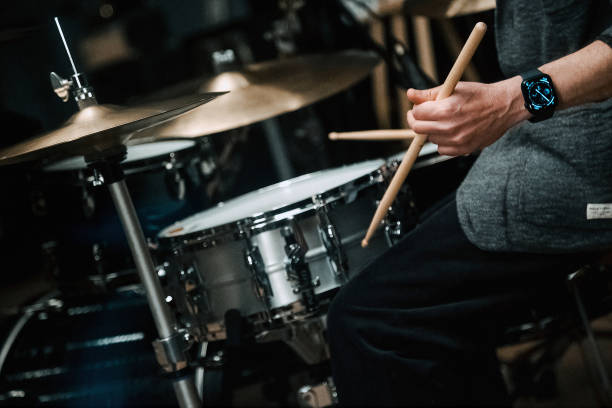In the world of drumming, independence is more than a skill—it’s a mindset, a dance between limbs that tells a story through rhythm. Achieving limb independence is often seen as a rite of passage for drummers, a hallmark of mastery that separates the ordinary from the extraordinary. Among the myriad exercises available, one deceptively simple yet profoundly effective approach involves pairing consistent hand patterns with improvised footwork—a challenge that bridges control and creativity.

The Limb Independence exercise begins with the snare drum, where single-stroke eighth notes lay the foundation. For right-handed drummers, it starts with the right hand alternating with the left, and vice versa for left-handed players. This repetitive motion, devoid of accents or dynamics, creates a steady pulse—a blank canvas. At first glance, it seems straightforward, but the true challenge emerges when the feet enter the picture.
Here, the drumming world expands. The drummer is tasked with improvising using the bass drum and hi-hat while maintaining the unwavering consistency of the hand pattern. This interplay, while conceptually simple, pushes boundaries. It requires the mind to split into distinct channels, each limb working autonomously yet cohesively within the greater rhythm.
For many, this coordination is where the exercise reveals its depth. It’s not about complexity for complexity’s sake but about cultivating control. The hands maintain their course, steady and deliberate, while the feet explore possibilities, finding their voice within the structure. Struggles arise, particularly when both the kick drum and hi-hat come into play, but these moments are where growth begins.
What makes this exercise transformative is its adaptability. It’s not confined to eighth notes or single-stroke rolls; it invites personalization. A drummer might transition to sixteenth notes, incorporate specific kick patterns, or experiment with dynamics, tempos, and textures. Shifting the hand pattern to different surfaces—like the floor tom—can inject new life into the routine, offering fresh perspectives for solos or fills.
The exercise’s brilliance lies in its ability to balance discipline with freedom. It encourages drummers to practice regularly but for brief, focused sessions. The goal is not just to play it correctly but to reach a point where it’s impossible to play it wrong. This approach fosters both precision and spontaneity, qualities that elevate drumming from mechanical repetition to expressive artistry.
As the exercise unfolds, it becomes more than a warm-up or technical drill. It’s an exploration of what it means to be a drummer—someone who connects independent movements into a unified rhythm. It’s about finding harmony in the chaos, turning coordination into music, and transforming a simple beat into a statement. For those willing to embrace the challenge, it’s a gateway to new dimensions of creativity, proving that independence is not the absence of connection but the ability to create it on one’s terms.
